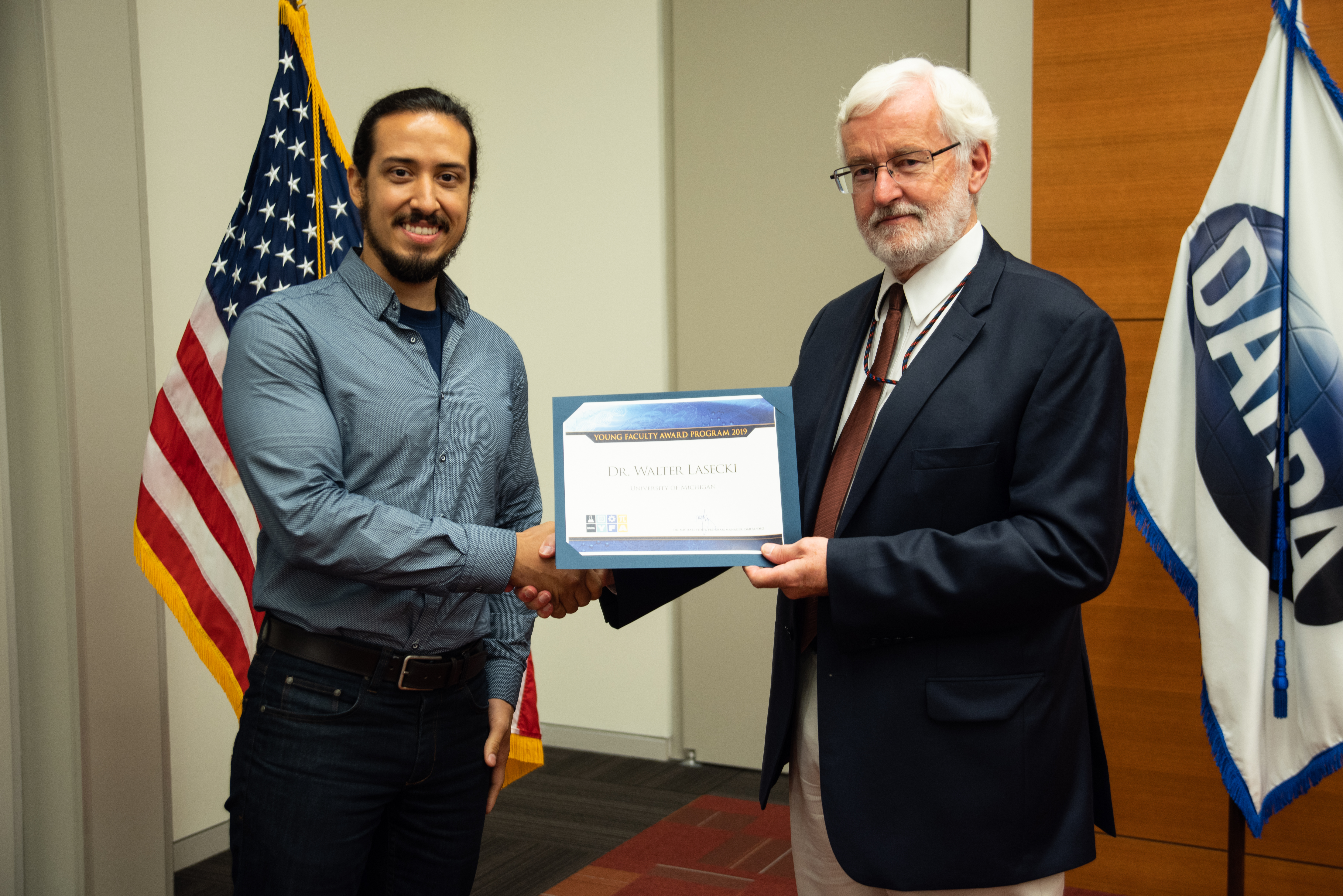DARPA Award for more responsive AI that combines human and machine
The goal of Lasecki’s proposal is to create methods for making AI systems more robust and flexible.

 Enlarge
Enlarge
Prof. Walter Lasecki has been awarded a DARPA Young Faculty Award for his project, “Hybrid Intelligence Agents for Deploying Robust AI Systems.” The award recognizes “rising research stars” who hold junior faculty positions, with the goal of developing the next generation of scientists who will address national security challenges. His project seeks to combine human and robotic intelligence to make AI systems more responsive and robust.
While machine learning (ML) has made great strides in solving focused, well-defined problems, prior work has shown that generalizing this ability is far more difficult. As a result, ML remains unreliable in many real-world settings, where unexpected scenarios frequently arise. Meanwhile, crowdsourcing has shown that it is possible to create more robust AI systems by integrating human intelligence into the computational workflows underlying AI systems. These “hybrid intelligent agents” can accomplish tasks better than either humans or AI. His proposal explores hybrid techniques that work in critical and time-sensitive domains.
The goal of Lasecki’s project is to create methods for making AI systems more robust and flexible – enough to use even in scenarios where training data is limited or non-existent. Through techniques for coordinating collective human feedback—whether from small, dynamic groups or large crowds—in real time, the team will create “hybrid intelligent” agents capable of operating reliably where no current AI system can or will be able to in the foreseeable future.
Lasecki aims to create a future in which distributed human intelligence is leveraged to help bridge key gaps in the ability of ML systems in real time, by contributing more robust, powerful, and adaptive AI tools. Specifically, he focuses on four cases where ML fails due to: a lack of training data; insufficient time to train on existing data; an inability to understand or use existing data; or an inability to identify when or where to use trained models.
In past work, Lasecki has used this approach to hybrid intelligence, combined with crowdsourcing, to improve the responsiveness of autonomous vehicles to unexpected situations.

 MENU
MENU 
